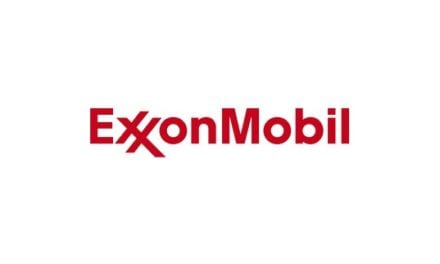Colder Winter Forecast
- 55-60 per cent likelihood of La Niña this winter
- Cold winter suggests higher demand for heating fuels
- Midwest propane stocks 9 per cent less than last year
- Natural gas breaks price support. $2.75 next support
Sincerely, Alan Levine, Chairman of Powerhouse

The Matrix
If three hurricanes this season were not enough, comes now the prospect of La Niña this winter. La Niña is a weather pattern that arises from cooling sea surface temperatures (SST’s) in the tropical Pacific Ocean. And this year, several computer models are forecasting La Niña winter conditions. This could have important implications for “winter, next summer’s tropical season and global temperatures.”
According to NOAA’s Climate Prediction Center, there is now a 55-60 per cent chance of La Niña this fall and winter. SST’s have been cooling rapidly. Waters, cooler-than-normal, have been accumulating along the Equator. This could bring cooler, wet conditions in the Northeast, warmer, drier patterns in the South and impactful patterns worldwide.

A cooler winter implies, of course, greater demand for heating fuels. And this has special resonance for propane in the United States. An expanding market for propane globally has created an important export market for this commodity, eroding domestic supplies. This sets up a bullish situation for propane which has already experienced significant price growth. Since the beginning of July, spot propane futures have rallied more than fifty per cent, moving from sixty cents to ninety cents.
DOE has released an analysis of propane stocks in view of NOAA’s forecast of winter weather in the Midwest that is 15 per cent colder than last year. Propane stocks in the Midwest are an important measure of national supply adequacy. And while inventories in the Midwest vary widely, they typically run 25-28 million barrels at the beginning of October.
This year, stocks stood at 26.4 million barrels at the end of the week ending September 29, 2017. This was 9.3 per cent below the level of Midwest supplies last year. Against a longer horizon, Midwest stocks have been below the five-year average level since mid-January, 2017. Stocks are below last year even though H. Harvey interfered with normal movements from the Midwest to the Gulf Coast. Other bullish disturbances were limited operation of fractionation and export facilities.

Supply/Demand Balances
Supply/demand data in the United States for the week ending September 29, 2017 were released by the Energy Information Administration.
Total commercial stocks of petroleum decreased 6.1 million barrels during the week ending September 29, 2017.
Builds were reported in stocks of gasoline, fuel ethanol, K-jet fuel, and residual fuel oil. There were draws in stocks of distillates, propane, and other oils.
Commercial crude oil supplies in the United States decreased to 465.0 million barrels, a draw of 6.0 million barrels.
Crude oil supplies decreased in four of the five PAD Districts. PAD District 1 (East Coast) crude oil stocks fell 1.7 million barrels, PADD 3 (Gulf Coast) crude oil stocks declined 4.4 million barrels, PADD 4 (Rockies) crude stocks decreased 0.2 million barrels, and PADD 5 (West Coast) stocks retreated 3.2 million barrels. PADD 2 (Midwest) crude oil stocks rose 3.4 million barrels.
Cushing, Oklahoma inventories increased 1.6 million barrels from the previous report week to 62.5 million barrels.
Domestic crude oil production increased 14,000 barrels daily to 9.561 million barrels per day from the previous report week.
Crude oil imports averaged 7.214 million barrels per day, a daily decrease of 213,000 barrels. Exports rose 493,000 barrels daily to 1.984 barrels per day.
Refineries used 88.1 per cent of capacity, a decrease of 0.5 percentage points from the previous report week.
Crude oil inputs to refineries decreased 145,000 barrels daily; there were 16.029 million barrels per day of crude oil run to facilities. Gross inputs, which include blending stocks, fell 85,000 barrels daily to 16.358 million barrels daily.
Total petroleum product inventories saw a decrease of 0.1 million barrels from the previous report week.
Gasoline stocks rose 1.6 million barrels from the previous report week; total stocks are 218.9 million barrels.
Demand for gasoline decreased 281,000 barrels per day to 9.241 million barrels daily.
Total product demand decreased 1.385 million barrels daily to 19.714 million barrels per day.
Distillate fuel oil supply declined 2.6 million barrels from the previous report week to 135.4 million barrels. National distillate demand was reported at 4.007 million barrels per day during the report week. This was a weekly increase of 261,000 barrels daily.
Propane stocks declined 0.4 million barrels from the previous report week to 78.0 million barrels. Current demand is estimated at 965,000 barrels per day, a decrease of 196,000 barrels daily from the previous report week.
Natural Gas
According to the Energy Information Administration:
Net injections fall below the five-year average. Net injections into storage totaled 42 Bcf for the week ending September 29, compared with the five-year (2012–16) average net injections of 91 Bcf and last year’s net injections of 76 Bcf during the same week. Increased power demand for natural gas likely contributed to lower net injections compared with the previous report week, despite steady natural gas production. Working gas stocks total 3,508 Bcf, which is 8 Bcf lower than the five-year average and 161 Bcf lower than last year at this time.
Working gas stocks poised to end the refill season near the five-year average. So far during the 2017 refill season, net injections into storage are 16% lower than the comparable five-year average—1,457 Bcf during the 2017 refill season compared with the five-year average increase of 1,730 Bcf. If net injections continue to be 16% lower than the five-year average going forward, then working gas stocks will reach 3,782 Bcf by the end of the refill season. However, working gas stocks will total 3,834 Bcf if net injections into working gas match the five-year average for the remainder of the refill season.
The latest injections were lower than analysts’ expectations. Nonetheless, prices fell and have broken support at $2.86. New support can be found at $2.74. Elliott Wave analysis points toward a $2.50 objective.
Futures trading involves significant risk and is not suitable for everyone. Transactions in securities futures, commodity and index futures and options on future markets carry a high degree of risk. The amount of initial margin is small relative to the value of the futures contract, meaning that transactions are heavily “leveraged”. A relatively small market movement will have a proportionately larger impact on the funds you have deposited or will have to deposit: this may work against you as well as for you. You may sustain a total loss of initial margin funds and any additional funds deposited with the clearing firm to maintain your position. If the market moves against your position or margin levels are increased, you may be called upon to pay substantial additional funds on short notice to maintain your position. If you fail to comply with a request for additional funds within the time prescribed, your position may be liquidated at a loss and you will be liable for any resulting deficit. Past performance may not be indicative of future results. This is not an offer to invest in any investment program.
Powerhouse is a registered affiliate of Coquest, Inc.
Was this helpful? We’d like your feedback.
Please respond to [email protected]
Copyright © 2017 Powerhouse, All rights reserved.










